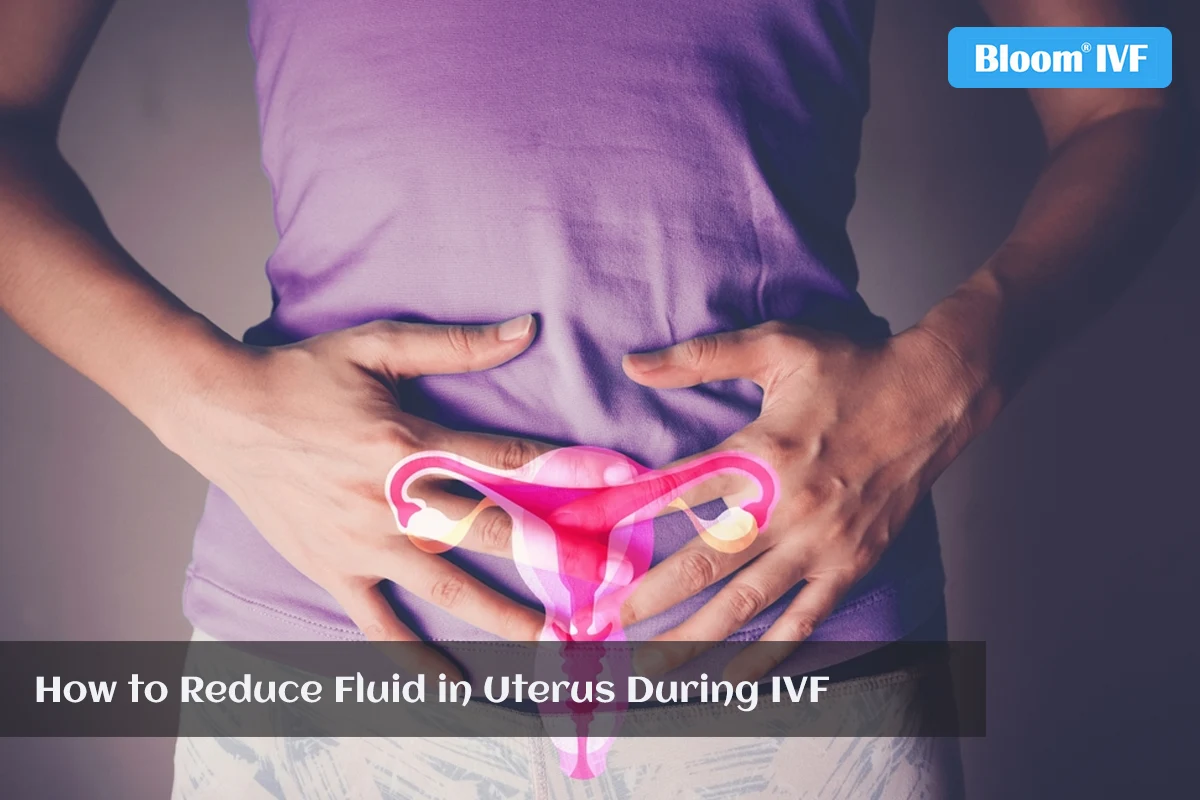How To Reduce Fluid In Uterus During IVF
Fluid accumulation in the uterus, also known as hydrosalpinx, can be a significant concern for individuals undergoing IVF (In Vitro Fertilization) treatment. It can impact the chances of successful implantation and lead to complications. If you’re facing this issue, understanding how to reduce fluid in the uterus is essential. In this blog, we will explore effective strategies to manage fluid buildup and increase the likelihood of a successful IVF outcome.
Understanding The Cause
Fluid in the uterus can arise from several factors, including previous infections, endometriosis, or complications from pelvic surgery. The presence of fluid can interfere with embryo implantation, making it crucial to address this issue before or during the IVF process. Understanding how to reduce fluid in uterus IVF is essential. Consulting with a fertility clinic is the first step to identifying the cause and determining the best course of action.
Top 6 Ways To Reduce Fluid In Uterus
Consult with a Specialist
- The first step is to consult with the best IVF doctor at a reputable fertility clinic. At clinics like Bloom IVF, located in cities such as Mumbai, Delhi, Bangalore, and Mohali, you can receive personalized care and expert advice on managing fluid in the uterus.
Hysteroscopy
- One of the most effective ways to address fluid in the uterus is through hysteroscopy, a minimally invasive procedure. During this procedure, a thin tube with a camera is inserted into the uterus to visualize and treat any abnormalities. If fluid-filled cysts or blockages are present, the doctor can drain the fluid and improve the uterine environment for implantation.
Medication
- Your doctor may recommend specific medications to address underlying issues contributing to fluid buildup. Antibiotics may be prescribed if an infection is present, while hormonal treatments may help regulate the menstrual cycle and improve uterine health.
Surgery
- In cases of significant hydrosalpinx, surgical intervention may be necessary. This could involve removing the affected fallopian tube to prevent fluid from entering the uterus during IVF. Discuss the potential risks and benefits of surgery with your fertility specialist.
Embryo Transfer Timing
- Timing is crucial in IVF treatment. Your fertility specialist will monitor your hormone levels and the uterine lining to determine the optimal time for embryo transfer. Ensuring the uterus is in the best possible condition can significantly improve the chances of success.
Lifestyle Modifications
- Maintaining a healthy lifestyle can also aid in reducing fluid in the uterus. This includes staying hydrated, eating a balanced diet, managing stress, and avoiding tobacco and excessive alcohol consumption.
The Importance Of Choosing The Right Fertility Clinic
When dealing with issues like fluid in the uterus, selecting the right fertility clinic is vital. Clinics like Bloom IVF are known for their state-of-the-art technology and experienced staff, making them a top choice for many individuals seeking IVF treatment in Mumbai, Delhi, Bangalore, and Mohali.
Conclusion
Managing fluid in the uterus is essential for improving the chances of a successful IVF outcome. Knowing how to reduce fluid in uterus IVF involves consulting with a qualified specialist, exploring treatment options like hysteroscopy, and making necessary lifestyle adjustments. You can take proactive steps to enhance your fertility. If you’re facing this challenge, don’t hesitate to reach out to a trusted fertility clinic like Bloom IVF to discuss your options and create a personalized plan for your IVF journey.
Frequently Asked Questions (FAQs)
How to get rid of fluid in uterus IVF?
Fluid in the uterus can be addressed through procedures like hysteroscopy, medication, or surgery. Consult a fertility specialist for a personalized treatment plan.
How to increase blood flow to uterus IVF?
To enhance blood flow to the uterus, consider lifestyle changes such as regular exercise, a balanced diet, hydration, and avoiding smoking. Certain supplements may also help, but consult your doctor first.
Can IVF be successful with fluid in the uterus?
While IVF can be successful with fluid in the uterus, the presence of fluid may impact implantation rates. It’s crucial to address the issue beforehand to improve chances of success.
How does fluid in the uterus increase?
Fluid in the uterus can increase due to factors like infections, endometriosis, pelvic inflammatory disease, or complications from surgery.
How does fluid come into the uterus?
Fluid can enter the uterus through the fallopian tubes, often due to conditions such as hydrosalpinx, where the tubes are blocked and filled with fluid.
How to know if fluid is in my uterus?
Fluid in the uterus can be diagnosed through imaging tests like ultrasounds or hysterosalpingography (HSG). Symptoms may include abnormal bleeding or pelvic pain, but not all cases show symptoms.

